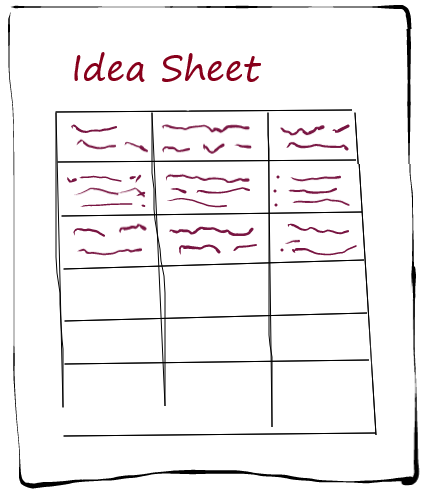# Brainwriting
- Purpose
- Brainstorming in silence: generate new ideas in a group
- Time required
- approx. 30 minutes
- Participants
- 1 moderator, max. 12 participants (UX team, user)
- Level of experience
- Beginner

# Summary
Brainwriting offers an alternative to classical brainstorming. In brainwriting, the participants do not discuss and exchange their ideas verbally, but rather produce their ideas in written form.
# Result
Brainwriting is similar to brainstorming in that it generates new ideas. The aim of brainwriting is to let all members "have their say", since it is not about being the loudest.
# Approach
- A moderator formulates the question in the format "How can we...?"
- Each participant formulates three ideas on three separate pieces of paper as an answer to the question.
- Five runs follow in which the notes are passed on to next participants, who supplement the ideas.
- The results are then made visible to everyone and analysed, evaluated and discussed in the group.
# Time of use
Brainwriting is a suitable alternative to brainstorming because it is easier to moderate and has a more disciplined approach to idea generation. It also prevents the influence of the members among themselves. This can be advantageous, for example, if many ideas are desired or if there are blocking barriers between the individual participants.
# Tools and Templates
- Pen and paper for each participant
- Whiteboard
# Advantages
Since the participants remain anonymous, they are not personally vulnerable. In addition, introverted participants bring in their ideas, which they would tend to hold back in open group situations.
# Disadvantages
There is a risk that only known ideas will be taken up and documented. It is also necessary to revise the mostly superficial ideas.
# Hints
The method is similar to the 6-3-5 Method, but there is no given group size. The number of ideation rounds can be adjusted according to needs, but should be clearly communicated.
# Sources
- Curedale: Design Thinking: process and methods manual (opens new window) Design Community College Inc. ISBN: 9780988236240.